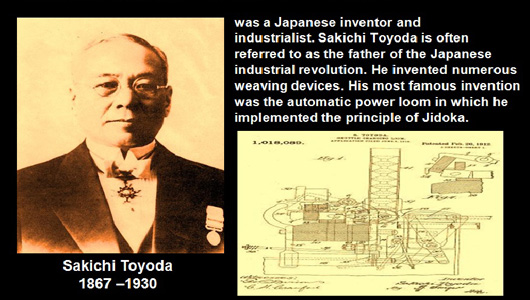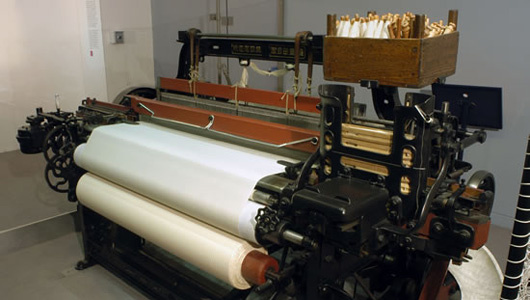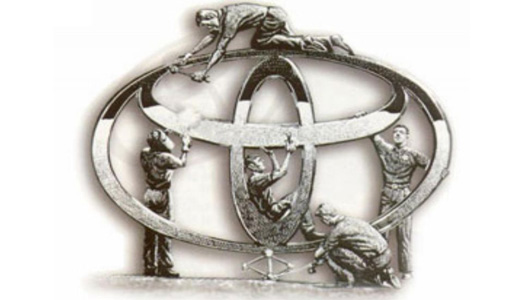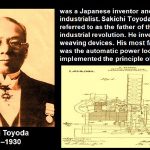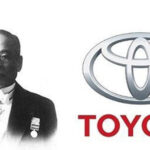This content is the property of Sakichi Toyoda, a remarkable entrepreneur who founded and built Toyota Motor Corporation, the largest automaker in Japan. Throughout his life, Sakichi Toyoda did not initially think about manufacturing cars. Instead, he established and developed a small business that eventually became the Toyota Group.
Not only did Sakichi Toyoda possess creative and innovative skills, but he also had certain entrepreneurial qualities. In 1891, he patented his weaving machine, and from that moment, he became a producer of weaving machines. Initially, he sold his products to local customers, but gradually expanded his market to distant regions. With every production, he would bring the machines to Tokyo or other major centers to sell. Sakichi Toyoda always had a desire for innovation. Additionally, the advancement of technology and market demand pressured him to create new and more advanced weaving machines.
After numerous experiments and research, Sakichi Toyoda surprised the world in 1897 with his invention of a power loom. This marked the first time in Japan that people witnessed wooden looms operating with the power of steam. The power loom significantly increased weaving productivity, as one operator could control multiple machines simultaneously.
Sakichi Toyoda’s Toyoda Loom Works officially became a factory. He built another factory in Nagoya to produce weaving machines and established a research and development center for weaving machines in the same area. The successful development of power looms further fueled Sakichi Toyoda’s continuous work and creativity.
During that period, modern weaving machines, especially those from Europe, had emerged worldwide. Therefore, Sakichi Toyoda constantly strived to improve and enhance his weaving machines to be better and faster.
He also became increasingly aware of the competitive landscape. The cost of Sakichi Toyoda’s weaving machines received significant attention to ensure they were reasonably priced and highly competitive. Delivering high-quality yet reasonably-priced products to attract a large customer base became Sakichi Toyoda’s business philosophy. This principle has also been the secret to success for most Japanese manufacturers to this day. The Toyota Company eventually outperformed foreign competitors in the weaving machine market due to the competitive prices of its machines. A Toyoda weaving machine of the same kind was only one-third or one-fourth the price of imported weaving machines from Europe.
Recognizing this advantage, Sakichi Toyoda considered exporting weaving machines and opening factories overseas. Initially, he thought of establishing a factory in the United States or Europe, the largest consumer markets for weaving machines at that time. However, Sakichi Toyoda soon realized that labor costs there were higher than in Japan, which would result in higher product prices and potentially erode the competitive edge in terms of pricing.
As a result, Sakichi Toyoda decided to establish a factory in China, where labor was readily available and cheap. Shanghai became the first overseas base for Sakichi Toyoda, which then flourished with new ambitions.
The next part will continue with static details and dynamic information about the creative process during the founding period of Toyota Motor Corporation.
To compensate for his lack of basic technical skills, Sakichi Toyoda constantly conducted market research in Europe and the United States. While he did not have groundbreaking ideas for everything, he knew how to learn and improve to make things better. In terms of weaving machines, Sakichi Toyoda held over 100 recognized patents and inventions.
During a trip to the United States to gather information for his automated weaving machine project, Sakichi Toyoda coincidentally discovered the popularity of cars there, while Japan had none. Learning that the Japanese government had to import 800 Ford cars at once, Sakichi Toyoda’s national pride once again surfaced. He wondered if the Japanese were incapable of producing cars. At that time, Sakichi Toyoda was already over 60 years old and discussed the matter with his son, Kichiro Toyoda, who would continue to lead the Toyoda Company. This is when the idea of producing cars was born and pursued by Sakichi Toyoda and his son.
Sakichi Toyoda agreed to invest a significant amount of money for his son to establish an automotive research center alongside the weaving machine research center he was in charge of. Drawing from his youthful experience of inventing his first weaving machine, Sakichi Toyoda advised his son to go to the United States and Europe to study and grasp car production technology. He believed they needed to see how others produced cars before finding ways to make cars better.
True to his father’s advice, Kiichiro Toyoda made every effort to learn about car production technology. Father and son bought dozens of car engines to dissect and study each component.
With the determination and meticulousness characteristic of the Japanese, the Toyoda family continued to produce weaving machines while quietly preparing for the first automobile production line in Japan. Starting in 1930, the family completed the production lines for car bodies, chassis, and engines one by one.
In 1934, Kiichiro Toyoda, who had taken over the company from his father, announced the first car, paving the way for the glorious era of the Toyota Group.
By Thao Anh (Source: TTTÐ/ Compilation)
The Story of Toyota Founder – Sakichi Toyoda (1)
It was only towards the end of his life that Sakichi Toyoda started considering the idea of automobile manufacturing. Even Sakichi Toyoda himself, during his lifetime, never imagined that the small business he had founded and built would later become the largest automobile manufacturing company in Japan, the Toyota Group.




























